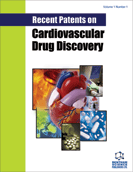Abstract
HMG-CoA reductase inhibitors have consistently demonstrated a relative risk reduction of death and myocardial infarction ranging between 29 and 35%. Nevertheless, in spite of significant improvement in prevention, cardiovascular disease remains the main cause of morbidity and mortality in industrialized countries. This significant residual risk observed in approximately 70% of patients under optimal anti-atherosclerotic therapies, warrants the exploration and development of alternative cardiovascular drugs. Specifically, HDL-C levels have been inversely correlated with the incidence of cardiovascular disease and an estimated 1 mg/dl higher HDL-C is associated with a 2% lower risk for men and a 3% lower risk for women. However, HDL-C-C pharmacological induced increases presented contradicting results regarding atherosclerotic development and in some cases increased cardiovascular mortality. In this review, we will focus on the structure and metabolism of HDL-C and patents related to HDL-C levels and cardiovascular disease along with the possible role of HDL-C increasing therapies in the future primary and secondary prevention of cardiovascular disease.
Keywords: ABCA1- Apo A1- cardiovascular disease, CETP inhibitors, dietary and lifestyle modifications, HDL-C, HDL-C metabolism - LXR agonists, niacin- recombinant HDL, PPAR modulators, HDL-C METABOLISM, Nascent HDL, ABCA1 Protein
 14
14


